Potřebujeme váš souhlas k využití jednotlivých dat, aby se vám mimo jiné mohly ukazovat informace týkající se vašich zájmů. Souhlas udělíte kliknutím na tlačítko „OK“.
ASTM F1992-99(2007)
Standard Practice for Reprocessing of Reusable, Heat-Stable Endoscopic Accessory Instruments (EAI) Used with Flexible Endoscopes (Withdrawn 2016)
Automaticky přeložený název:
Standardní praxe pro přepracování pro opakované použití, tepelně stabilní Endoskopické příslušenství Instruments (EAI) Používá se flexibilních endoskopů
NORMA vydána dne 1.12.2007
Informace o normě:
Označení normy: ASTM F1992-99(2007)
Poznámka: NEPLATNÁ
Datum vydání normy: 1.12.2007
Kód zboží: NS-52369
Počet stran: 6
Přibližná hmotnost: 18 g (0.04 liber)
Země: Americká technická norma
Kategorie: Technické normy ASTM
Kategorie - podobné normy:
Anotace textu normy ASTM F1992-99(2007) :
Keywords:
cleaning, endoscopic accessory instrument (EAI), flexible endoscope, heat stable instrument, heat sterilization, reprocessing, reusable, ultrasonic cleaning, EAI (endoscopic accessory instrument), Flexible surgical implant materials, Heat stable instrument, Reprocessing medical instruments, Reusable medical instruments/devices, Surgical exploration, Ultrasonic cleaning, ICS Number Code 11.040.30 (Surgical instruments and materials)
Doplňující informace
| Significance and Use | ||
|
EAIs may have design features such as coiled metal sheaths, pivoting joints, opposed surfaces, and internal lumens or wires which make visual inspection for cleanliness difficult if not impossible. By nature of their design requirements, EAIs are more difficult to reprocess than many other types of medical instruments. Because EAIs are used to diagnose and treat disease in both immunocompetent and immunocompromised individuals, care must be taken to ensure that only patient-ready devices are used for examination. The use of EAIs in patients having diagnosed or suspected infections such as hepatitis B, hepatitis C, or human immunodeficiency virus (HIV) is not contraindicated. Further, EAIs need not be dedicated for use only in these patients. Persons responsible for reprocessing must understand the specifications, nomenclature, function of component parts, and interior design of EAIs in order to render them patient-ready. Persons responsible for reprocessing EAIs should follow this practice and associated labeling and instructions from manufacturers after each endoscopic procedure to ensure that the EAI will be patient-ready. Reprocessing of EAIs should be the specific responsibility of appropriately trained personnel. Temporary employees without the requisite training should not be given these responsibilities. The responsibility for reprocessing of EAIs should not be delegated from person to person unless each has the appropriate training for the position. Reprocessing personnel should have the ability to read, understand, and implement instructions from manufacturers and regulatory agencies as they relate to EAI reprocessing. Reprocessing personnel should have the opportunity to become completely familiar with the mechanical aspects of the devices. They may gain this knowledge through study of the manufacturer's information and demonstration by representatives. Reprocessing personnel should be made fully aware of the potential chemical and infectious hazards for patients and health care personnel associated with the reprocessing of EAIs. Training should include: A thorough background in infection control principles and concepts based on written in-house infection control procedures. A thorough background regarding the potential for negative patient outcomes resulting from lapses in compliance with written reprocessing guidelines, Familiarization with Occupational Safety and Health Administration (OSHA) regulations and in-house policies regarding the appropriate and safe handling of chemical reprocessing agents and equipment used during reprocessing of EAIs, and Information on the safe handling of EAIs contaminated with patient tissue and fluids after use, including familiarization with principles and practices of standard (universal) precautions. Note 1—Although healthcare workers and patients may benefit from adhering to the regulatory guidelines issued by federal and state OSHA agencies, these guidelines are directed only toward healthcare worker safety and health. They may not be sufficiently inclusive for optimum safety and health of patients. Therefore, contemporary infection control guidelines should be consulted in addition to OSHA guidelines. This practice is not intended to replace the reprocessing instruction provided by the manufacturers of EAIs or suggest specific equipment or chemical reagents to be used for reprocessing. Rather, it is to be used together with manufacturers' instructions that provide specific instructions for specific products. See Appendix X1.1. This practice is not intended to cover endoscopic techniques, patient care, or other medical aspects of flexible endoscopy. This practice does not include instruction for reprocessing flexible endoscopes. |
||
| 1. Scope | ||
|
1.1 This practice covers reusable, heat-stable endoscopic accessory instruments (EAI) designed to be inserted into flexible endoscopes and clearly defined in the user instructions as devices intended for reuse among patients. The EAIs covered by this practice may or may not have lumens or loosely joined surfaces, may or may not have access ports for flushing, and may or may not be capable of being completely disassembled prior to reprocessing. 1.2 This practice is not intended to be applied to the reprocessing of single-use, disposable EAIs specifically designed and labeled as such by their manufacturers. 1.3 This practice is not intended to address reprocessing of heat-sensitive EAIs, for example, those not capable of withstanding heat sterilization. Reprocessing of each heat-sensitive EAI must be considered on an individual basis according to specific instructions from the manufacturers of the EAI and the low-temperature sterilization device. 1.4 This practice is intended to complement, not replace, the instructions provided by product manufacturers. EAI manufacturers should provide properly validated instruction and labeling necessary for users to understand the basic design, specifications, nomenclature, and components of specific accessories and to properly inspect, prepare, use, reprocess, and store these instruments. 1.5 Endoscopic technique and the medical aspects of endoscopy are not covered in this practice. 1.6 This practice details the basic steps necessary to reprocess a heat-stable EAI and render it patient-ready. 1.7 A patient-ready EAI is one that has been thoroughly cleaned using a validated cleaning procedure, rinsed with water to remove residual detergent, lubricated (if necessary) and drained to remove excess lubricant, dried, packaged, heat sterilized and stored to prevent from being compromised sterility before use. 1.8 This practice describes only manual reprocessing and does not address cleaning of an EAI by an automated reprocessing device. 1.9 To ensure the proper adherence to this practice, reprocessing personnel should meet certain requirements as specified in 5.5 to 5.7. 1.10 This practice does not address the steps necessary for the reprocessing of flexible endoscopes (see Practice F 1518). 1.11 This standard does not purport to address all of the safety concerns, if any, associated with its use. It is the responsibility of the user of this standard to establish appropriate safety and health practices and to determine the applicability of regulatory limitations prior to use. |
||
| 2. Referenced Documents | ||
|
Podobné normy:
Historická
1.3.2014
Historická
1.12.2013
Historická
1.9.2010
Historická
1.10.2013
Historická
1.2.2008
Historická
1.2.2008
Doporučujeme:
Aktualizace zákonů
Chcete mít jistotu o platnosti užívaných předpisů?
Nabízíme Vám řešení, abyste mohli používat stále platné (aktuální) legislativní předpisy.
Chcete vědět více informací? Podívejte se na tuto stránku.


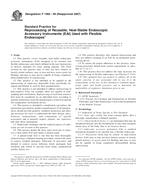
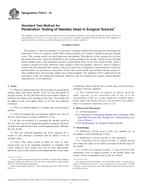 ASTM F3014-14
ASTM F3014-14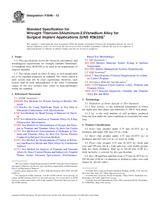 ASTM F3046-13
ASTM F3046-13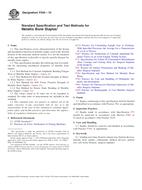 ASTM F564-10
ASTM F564-10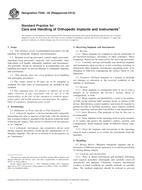 ASTM F565-04(2013)..
ASTM F565-04(2013)..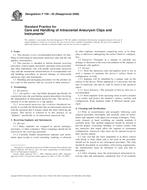 ASTM F700-93(2008)..
ASTM F700-93(2008)..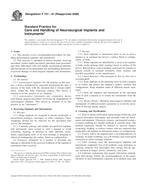 ASTM F701-81(2008)..
ASTM F701-81(2008)..
 Cookies
Cookies
